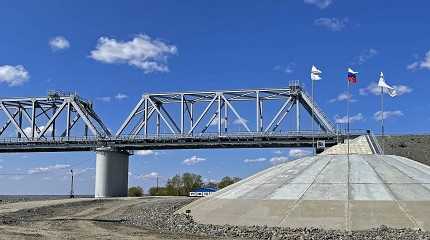
MOSCOW, November 16. /TASS/: Russia and China launched traffic on the first-ever railway bridge across the Amur River at the interborder section Nizhneleninskoye-Tongjiang, the Russian Direct Investment Fund (RDIF) said in a press release on Wednesday.
"The launch of traffic on the bridge opens a new transport corridor between Russia and China, which removes a number of existing infrastructure restrictions. The distance for transporting goods to the northern provinces of China will be reduced by more than 700 km compared to existing routes," RDIF noted.
"Unleashing the potential of Russian-Chinese cooperation is impossible without the development of transport and logistics infrastructure. China is Russia's largest trade and economic partner, as trade between our countries is showing steady growth and has already exceeded $150 billion this year," Kirill Dmitriev, head of the RDIF said as quoted by the press service.
"The historic railway bridge across the Amur River is one of the largest cross-border projects for Russia and China and a significant infrastructure project implemented by RDIF. Its opening will increase the competitiveness of Russian and Chinese enterprises, ensure a reliable and predictable schedule for the movement of goods and cargo, affordable raw materials and energy resources, as well as increase the capacity of railway routes between the Russian Federation and China by 1.5 times," he added.
The governments of Russia and China signed the agreement on the bridge’s construction in 2008. The RDIF together with Chinese partners financed more than 70% of the construction of the Russian part of the bridge. The VEB. RF state development corporation and Russian Railways also acted as investors in the project, according to the RDIF report.
The bridge part of the Nizhneleninskoye-Tongjiang railway crossing is 2.2 km long. The bridge is designed as a turn-based passage for trains along the track of two standards with a width of 1,520 mm (Russia) and 1,435 mm (China). The maximum throughput of the bridge will be up to 20 million tons of cargo per year.




